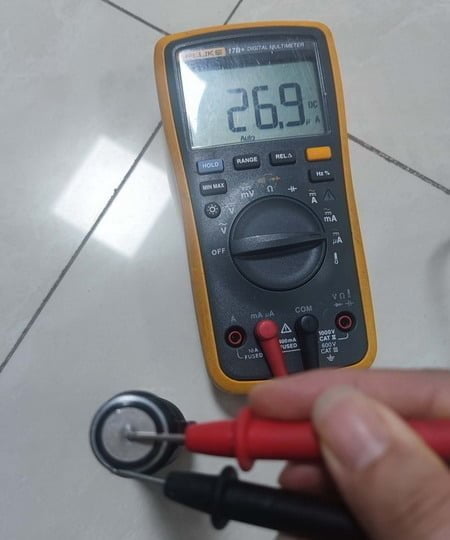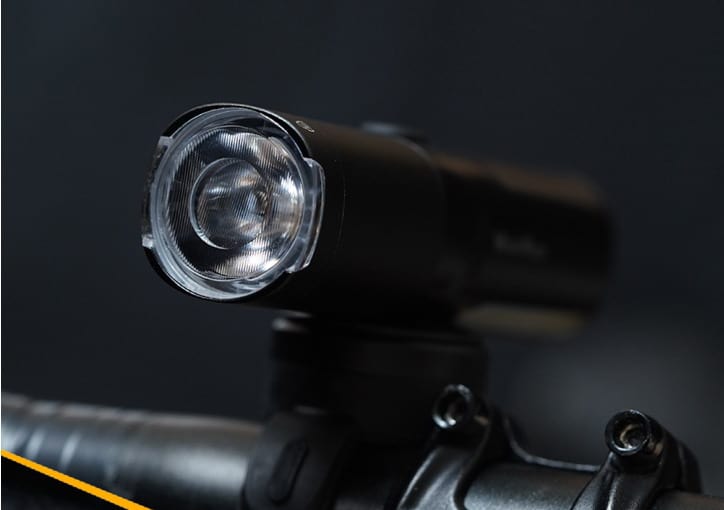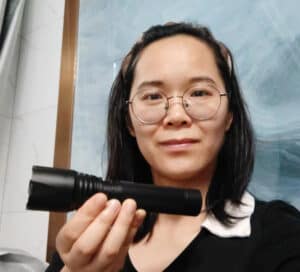You may not know what quiescent current is, but it is a very important and often overlooked specification in almost all electronic devices. What is a quiescent current, and what is the effect of quiescent current on electronic mobile devices? Continue reading this.
Oops, running out of power!
You must have had this experience: You placed brand-new flashlights or other battery electronic devices (cell phone, power bank watch, anti-theft monitor, earbuds, and more) in the warehouse or on the shelf. Several months later, you are ready to sell them, but they are found can’t work, or the output is much dimmer than the original one.
Or you go out for a business trip or holiday and put your electric control car in the garage for ten days without driving. You are back from holiday and try to drive the car again, but you find the vehicle can’t start again. How frustrating they are!

Some people may think that there must be a quality problem with these lights or devices. They may indeed be quality defects, but more often than not. Let’s suppose it was brand new and functional before being placed. Then it is very likely that a quiescent current causes the problem.
If the quiescent current causes it, is it considered a quality problem? It depends on how high is the quiescent current.
- If the static current is less than dozens uA, it’s a normal phenomenon.
- If it’s more than hundreds uA, then consider as a quality issue. The quiescent current is too high and affects the battery efficiency.
I am sure you need more clarification. To explain this, it is important first to understand what quiescent current is. And why does it affect the efficiency of battery usage?
What’s quiescent current?
Quiescent current is the current consumed by a circuit when it isn’t driving any load and its inputs aren’t cycling. Quiescent current is also called parasitic current and dark current. It is the current consumed by the device when it is not operating. For example, the flashlight gets less battery power automatically is a quiescent current discharge process.
Unit conversion and formula of the quiescent current.
Quiescent current is a low current. The units of quiescent current are generally uA and nA.
Their conversion with Ampere is as below:
1A=1000 mA=1000,000 uA=1000,000,000 nA
How to calculate the quiescent current?
Iq=Iin-Iout
While the quiescent current theoretically can be calculated, it is more often measured with a Multimeter.

Why is there a quiescent current in electronic devices?
The right amount of quiescent current is designed by electronics engineers, but too much quiescent current results from design flaws or distortions in electronic components.
As mentioned above, the quiescent current consumes battery power, so why do we design it in our devices? Can we cancel it? The answer is no. There are some reasons:
- Most of the devices use electronic switches. When the device is off, it also needs a standby current. Because the current keeps the IC active, so can restart to operating mode quickly.
- A quiescent current support an electronic device with a memory function. For example, the flashlight turns on again in the same mode it was the last time off. To achieve this memory function, the circuit must keep working. If there is no quiescent current, the circuit is disconnected, and the memory goes.
In short, almost all electronic devices are designed with quiescent current. This current is necessary to exist, but the lower, the better. Too high a quiescent current is a quality problem. It will shorten the standby time of the battery.
What is the biggest challenge of designing for the quiescent current?
As our flashlights are now smaller and more compact than before but still expect more functionality and higher performance, the efficient use of battery capacity must become higher and higher. Who wants a flashlight that runs out of power whenever they are ready to use it, and who wants to recharge their device frequently? Therefore, it is unacceptable for the static current to consume much battery power.
If the quiescent current can be extremely low, it is equivalent to double the standby time and more power saving. Then the number of charging reduce to a minimum.
But now, flashlights are getting more and more functions. And need more circuits to achieve these functions. More circuits mean a higher quiescent current.
So, the biggest challenge is that electronic devices should have a quiescent current but require it to be as low as possible.
Some experience in quiescent current.
- The mechanical switches-controlled devices do not have quiescent currents because it’s an open circuit when the switch is off. But now, the trend is that electronic switches are gradually replacing mechanical switches. Because now the power of the flashlight is getting higher and higher.
- High-power (over 30W) electronic devices (over 30W) cannot be controlled by mechanically switched because the switch must be big enough to get the output current through the button. But this switch will be too big for a flashlight.
- The quiescent current for the regular device needs to be under 30 uA.
- For a device with a USB function, its quiescent current is usually close to 150 uA.
- The more functions, the higher the quiescent current. For example, the quiescent current of a typical car is not more than 20mA, but the more advanced the car is, the more electrical devices are used, and the more IC chips are used, so the quiescent current also increases. With the increase in electrical equipment and battery capacity, the quiescent current of the car will become larger and larger. If you are more interested in car parasitic current draw, read this on Youtube.
How to classify if the quiescent current is in a value of expectation or too high?
Below is a rough way to judge if you cannot access a multimeter to test the quiescent current.
If a fully charged device runs low on power after three months without use, there must be a quality defect.
If an electronically controlled car fails to start, usually after a week of running, it is considered the cause of the failure.
Now, most devices have a quiescent current. But we generally do not pay attention to their quiescent current for direct power supply devices, such as TV, because it is relatively small. But for battery-powered devices, such as flashlights and power banks, because it has limited battery capacity, we must improve the effective use of the battery as much as possible.
How to store your flashlight?
- Take the battery out of the flashlight.
- If you can’t take out the battery, charge your light every three months to prevent the quiescent current from consuming the battery and causing the light can not work.



27 Responses
156318 117105Amazing blog! Is your theme custom made or did you download it from somewhere? A design like yours with a few simple adjustements would really make my blog shine. Please let me know where you got your theme. Thanks a lot 869124
710950 206465Hello! I just now would pick to supply a enormous thumbs up with the excellent data you can have here within this post. I will be coming back to your weblog website for additional soon. 511022
598709 367771It is difficult to get knowledgeable people within this subject, even so, you appear to be guess what happens youre dealing with! Thanks 195499
บทความนี้ให้ข้อมูลมีประโยชน์มากครับ ถ้าใครกำลังมองหาผู้ให้บริการตกแต่งงานศพ ผมแนะนำลองดูร้านที่มีผลงานจริงและรีวิวดี ๆ ครับ
Review mmy web blog; Aorest
เป็นข้อมูลที่มีประโยชน์มากเรื่อง “ดอกไม้งานศพ” ทำให้รู้ว่าการเลือก พวงหรีด ได้อย่างถูกต้อง ได้ดีเลยทีเดียว ค่ะ
Feel free to surf to my web site: จัดดอกไม้งานศพ
ชอบแนวคิดที่แชร์ไว้ในบทความนี้ครับ ถ้าใครกำลังมองหาผู้ให้บริการตกแต่งงานศพ ผมแนะนำลองดูร้านที่มีผลงานจริงและรีวิวดี ๆ
ครับ
Reviiew my blog – เมรุใกล้ฉัน
บทความนี้ให้ข้อมูลมีประโยชน์มากครับ ถ้าใครกำลังมองหาบริการจัดดอกไม้งานศพ
ผมแนะนำลองดูร้านที่มีผลงานจริงและรีวิวดี ๆ ครับ
my web site https://deanptvx888-Aorestwreath.Wpsuo.com
I am really impressed with your writing skills and also with
the layout on your blog. Is this a paid tjeme or did you customize it yourself?
Either way keep up the nice quality writing, it’s rare to see a great blog like this one today.
Review my web site; จัดดอกไม้หน้าศพ
I don’t even understand how I ended up here, however I thought this submit used to
be great. I do not recognize who you are but certainly you are going to a
famous bloggsr in the event you aren’t already. Cheers!
my website: รับออกแบบโลโก้ตามหลักฮวงจุ้ย
I really enjoy good wine. From a locazl vineyard or imported, winne always
makes the moment better. Anyone else here love wine?
#WineTasting
Also visit my blog – ไวน์ราคา
I’m a huge fan of good glass of wine. Whether it’s red or white,
wine alwways makes the moment better. Are there any wine lovers around?
#WhiteWine
Also visit myy page ไวน์
บทความนี้ให้ข้อมูลมีประโยชน์มากครับ ถ้าใครกำลังมองหาบริการจัดดอกไม้งานศพ ผมแนะนำลองดูร้านที่มีผลงานจริงและรีวิวดี ๆ ครับ
Feel free to visit mmy webb page Maggie
ชอบแนวคิดที่แชร์ไว้ในบทความนี้ครับ
ถ้าใครกำลังมองหาร้านจัดดอกไม้งานศพ ผมแนะนำลองดูร้านที่มีผลงานจริงและรีวิวดี ๆ ครับ
I really enjoy good vintage wine. From a local
vineyard or imported, wine always makes the moment
better. Anyone else here love wine? #RedWine
my blog … ไวน์ราคา
เป็นข้อมูลที่มีประโยชน์มากเรื่อง “ดอกไม้งานศพ”
ช่วยอธิบายการจัด พวงหรีด ได้อย่างถูกต้อง มากขึ้น ค่ะ
Here is my homepage จัดดอกไม้หน้าศพ
Can’t get enough of good glass of wine. Doesn’t
matter if it’s dry or sweet, it’s the perfect way to relax.
Who else enjoys winee tasting? #WineTasting
Take a look at my blog: ขาย wine
บทความนี้ให้ข้อมูลมีประโยชน์มากครับ ถ้าใครกำลังมองหาร้านจัดดอกไม้งานศพ ผมแนะนำลองดูร้านที่มีผลงานจริงและรีวิวดี ๆ ครับ
my web blog – พวงหรีด
I’m a huge fan of good glass of wine. Doesn’t matter if it’s dry
orr sweet, it’s thee perfect way to relax. Anyone else here love wine?
My blog :: Mamie
ขอบคุณสำหรับบทความดี ๆ ครับ ถ้าใครกำลังมองหาผู้ให้บริการตกแต่งงานศพ ผมแนะนำลองดูร้านที่มีผลงานจริงและรีวิวดี ๆ ครับ
my site: พวงหรีด ออนไลน์
ขอบคุณสำหรับบทความดี ๆ ครับ ถ้าใครกำลังมองหาร้านจัดดอกไม้งานศพ ผมแนะนำลองดูร้านที่มีผลงานจริงและรีวิวดี ๆ ครับ
my web page :: Aorest
อ่านแล้วเข้าใจง่ายดี
ที่พูดถึง IQOS Thailand
เข้าใจฟีเจอร์ต่างๆ มากขึ้น
กำลังตัดสินใจซื้ออยู่ ขอคำแนะนำการเลือกซื้อหน่อยครับ
บทความนี้เกี่ยวกับดอกไม้งานศพ ยอดเยี่ยมมาก
โดยส่วนตัวเพิ่งเจอเหตุการณ์สูญเสีย การเลือกช่อดอกไม้เลยเป็นเรื่องที่ต้องใส่ใจ
ใครที่กำลังเตรียมตัวจัดงานศพให้คนสำคัญควรอ่านจริงๆ
my web blog – รับจัดดอกไม้งานศพ
408033 366990Wanted posting. Loads of superb writing here. I wish I saw it located the site sooner. Congrats! 578758
829327 942262Thanks for another great post. 234332
752660 431964Its hard to search out knowledgeable individuals on this topic, but you sound like you realize what you are speaking about! Thanks 216987
869147 513834Just wanna comment that you have a very good internet internet site , I love the style it actually stands out. 918486
491300 785406Perfectly indited content , thanks for selective data . 984680